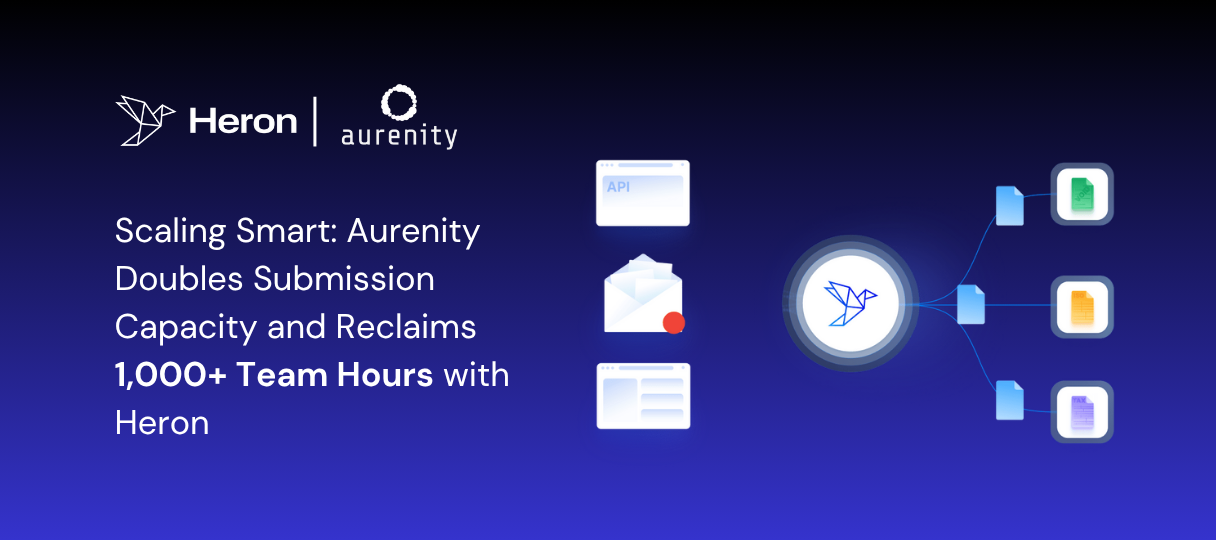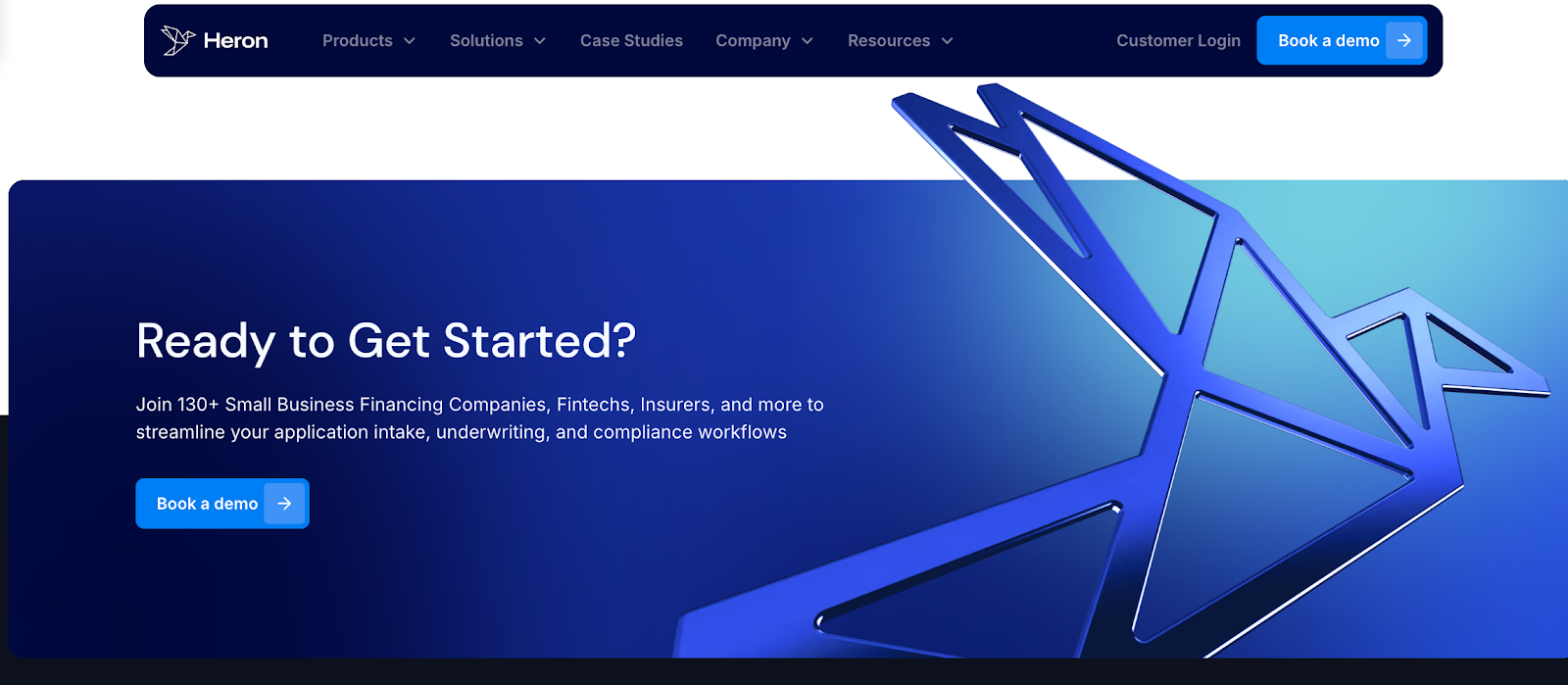Underwriters play a key role in the insurance process. They review applications, assess risk, and apply underwriting criteria to decide whether a policy should be approved and at what terms.
The way underwriters decide directly affects pricing, client trust, and overall business growth.
But the work is complex, and old processes can slow teams down. From handling large volumes of submissions to staying compliant with changing regulations, underwriters face daily challenges that make efficiency harder to achieve.
In this article, we'll cover the 8 best practices for insurance underwriting that can help you address challenges and improve your workflow.
What Are the Common Pain Points of the Insurance Underwriting Process?
A clear underwriting process keeps deals moving and protects the book. Yet many steps still slow teams down. Below is a list of the common challenges insurance underwriters face:
Manual Processes
Many underwriting teams still type data into forms, recheck numbers, and move files by hand. This invites human error and adds wait time.
It also creates gaps in underwriting decisions when two people in the same field approach it differently.
Picture a small business policy where an underwriter copies values from a scanned PDF into a portal.
A single typo in revenue or payroll skews the view of exposure and pushes the quote off course. This hurts speed and confidence at the desk.
Siloed and Poor-Quality Data
Files live in different tools, email threads, and old folders. Data formats do not match. Some records are missing or outdated.
And as a result, underwriters spend hours chasing facts across systems.
A common case is auto or personal lines, where claims history sits in one tool, credit scores live in another, and address data is stale. Pulls from third-party data sources may not line up with what the client sent.
Without clean inputs, data analytics cannot surface clear signals, and insurance companies face longer cycle times with more rework.
Low Customer Satisfaction
Slow quotes, repeated document requests, and unclear status updates make clients lose patience.
The insurance customer experience feels heavy when you ask for the same item twice or keep pushing the deadline.
Clients want simple updates, fast answers, and personalized service. When they don’t get that, they shop around, and your customer satisfaction drops. Lost trust often means lost renewals and fewer referrals for the broker.
Strict or Lenient Standards
Rules that are too tight block good accounts and reduce win rates. Rules that are too loose invite losses. The balance starts with clear underwriting criteria that reflect actual risk factors.
For example, a small business with steady cash flow and a strong payment history may justify more flexible terms, while a business operating in a high-risk industry with frequent cash flow declines may require tighter limits.
If the bar is off on either side, the book suffers. Too strict leads to missed growth. Too lenient increases claim frequency and can lead to financial losses.
Inconsistent Underwriting Standards Application
Two underwriters can read the same file and reach different terms. That happens when guidance is unclear, training is uneven, or checklists vary by team.
This confuses both agents and clients, who expect similar deals to get similar outcomes. It also makes portfolio steering harder, since the mix of risk changes by desk.
Clear playbooks and regular calibration help, but they need steady upkeep to support underwriting success.
Administrative Burden and Complexity
Thick questionnaires, duplicate forms, and multi-step approvals create extra work for underwriting teams. Every added touchpoint increases cost and slows down response times.
For example, a mid-market commercial package might involve multiple rounds of document review, endorsements, and carrier sign-offs before a quote can be released.
Each step has its purpose, but together they create bottlenecks that delay binding and frustrate retail agents waiting on terms.
This administrative weight is a major challenge for MGAs that need to balance speed with accuracy while managing high submission volumes.
Regulatory Changes and Compliance
Rules shift across states and lines. Filing needs, disclosure rules, and record keeping can change without much notice.
Underwriting teams must adjust the process, update forms, and track evidence that each file meets the new rule.
Misses can lead to fines and hurt financial stability. In the insurance industry, staying current is not optional, yet constant change pulls time away from core underwriting work.
Reliance on Outdated Technology and Integration Issues
Legacy tools make it hard to connect new data or automate simple steps. Systems do not talk to each other, so users retype information again and again.
This blocks the use of advanced technologies like artificial intelligence and machine learning for triage, document reading, and pricing support.
When the tech stack cannot plug into new feeds or modern rating tools, teams lose speed and insight.
Overwhelming Submission Volumes
During peak periods, underwriters often face more submissions than they can reasonably handle.
Files come in faster than they can be reviewed, leaving inboxes full and response times stretched. This creates a bottleneck that affects both brokers and clients.
The issue goes beyond just the number of submissions. Without a system to sort easy cases from complex ones, all files sit in the same queue.
Straightforward accounts that could be cleared with simple risk assessments end up waiting behind files that demand deeper review.
When submissions pile up, underwriters may rush through files to catch up. This increases the chance of human error and weakens the quality of underwriting decisions.
It also prevents teams from giving enough attention to the actual risk factors that truly matter.
8 Best Practices in Insurance Underwriting That Solve These Challenges
The insurance sector faces many challenges that slow down underwriting and limit growth. To move past these issues, underwriting teams can use a mix of better data, smart tools, and modern technology.
Here’s how.
1. Data Integration and Predictive Analytics
Strong underwriting depends on clear inputs. Instead of chasing fragmented information across emails, PDFs, and third-party systems, underwriters need access to clean, structured, real-time data.
Predictive analytics can then be applied to assess risk with more precision, giving underwriters a clearer view of the risk profile behind each application process.
For example, in auto insurance, combining loss history with credit data can flag exposures early and shape pricing more accurately.
By leveraging technology for integration, underwriters gain speed and accuracy while reducing potential costs linked to poor data.
2. Automation of Routine Tasks
A major challenge in underwriting is the heavy load of repetitive work that takes up valuable time.
Tasks such as business document checks, bank verification, and initial screenings are routine, but they still consume hours and often lead to human error. They also take underwriters away from the main goal: making strong underwriting decisions on complex cases.
Automated underwriting systems help by taking care of these routine tasks. They process documents, capture data, and run initial checks much faster than manual methods.
By streamlining underwriting processes, you can shorten turnaround times and allow your underwriters to focus more on cases that require deeper analysis and human interaction.
Heron is a sample tool you can use to automate repetitive tasks in your underwriting process.
Built for funders and brokers, Heron automates the messiest parts of the application process, such as parsing loss runs and validating submission packages against underwriting criteria.
This automation platform for insurance also pushes structured data directly into your CRM, giving teams cleaner inputs and faster workflows.
With the right information in front of them, underwriters can focus on assessing risk, leading to better decision-making and quality service without getting buried in paperwork.
3. Centralized and Cloud-Based Data Systems
Many insurers still keep records in scattered systems. Moving to centralized, cloud-based platforms creates a single source of truth for underwriting teams.
Underwriters gain consistent, validated records that update in real time. This reduces errors, improves compliance with industry standards, and supports better collaboration across departments.
When combined with automated systems, centralized data also makes it easier to scale volume without losing control.
For MGAs handling thousands of monthly submissions, centralization removes bottlenecks and supports faster underwriting success.
4. Enhanced Collaboration Tools
Underwriting is not a solo task. It requires input from brokers, agents, sales, and risk managers. Without strong collaboration, delays and miscommunication cause lost opportunities.
Modern technology now offers connected platforms where files, notes, and peer review happen in one place. This improves transparency and aligns everyone involved in the application process.
Heron integrates directly into existing CRMs for financial services and underwriting systems. This allows teams to collaborate on structured files rather than digging through scattered email threads.
With connected workflows, underwriters can stay focused on underwriting decisions while brokers stay updated.
5. Transparency and Customer Communication
Potential clients want clarity during underwriting. Long silences and repeated document requests damage trust and reduce the insurance customer experience.
Best practice is to give clients real-time updates on their status, whether through dashboards, email alerts, or AI-driven chat tools.
Clear updates also help explain underwriting criteria and the reasons behind approvals or declines.
Using AI chatbots to answer common questions, such as insurance coverage, can also improve customer experience while reducing the workload on staff.
This transparency and easier communication help brokers keep clients, while giving insurance companies stronger relationships that support competitive pricing and more personalized service.
6. AI-Driven Risk Assessment
Traditional methods often fall short when data sets are large or complex. Artificial intelligence models can process patterns at scale, making it easier to assess risk, detect fraud, and refine the risk profile of applicants.
AI can even help adjust insurance coverage levels in line with behavior-based indicators, improving both underwriting success and customer satisfaction.
Heron can help with one of its key features: Heron Checks. This feature allows you to automatically validate submissions against your pre-defined business rules, underwriting criteria, and compliance requirements.
Instead of manual review and exception handling, underwriters get instant feedback on completeness, rule violations, and approval status.
For example, it can flag submissions outside your appetite, detect missing data points, or screen out restricted states and industries before files even reach your team.
This means clean, compliant submissions flow directly to underwriters, while problematic ones are routed for exception handling.
7. Regulatory Compliance and Flexibility
Compliance is a constant pressure in the insurance sector. Rules shift often, and keeping every application aligned takes time and effort.
Automated systems with configurable rules engines reduce that burden. Audit trails and explainable AI help teams prove compliance while staying flexible with new regulations.
This protects insurance companies from regulatory penalties and potential costs linked to missed filings or reporting errors.
Heron adds value here by maintaining a full audit trail as it processes submissions. This makes it easier for teams to document compliance and demonstrate adherence to evolving requirements.
Another advantage is how Heron enriches raw data into business intelligence. Heron connects to dozens of trusted sources, from industry codes to credit bureaus, and even validates addresses against postal records.
They can spot restricted states, confirm a business is properly registered, or check for cash flow warning signs before moving a file forward.
By filling in the gaps and adding context, Heron makes compliance smoother and decisions stronger.
Underwriting teams work with current, accurate information, which reduces manual research and lowers the chance of mistakes.
8. Aim for Continuous Improvement
The best underwriting operations never stand still. Continuous training can keep your underwriting teams sharp, processes efficient, and outcomes consistent.
One important step is ongoing training. Underwriters should regularly update their knowledge of underwriting criteria, compliance requirements, and market trends.
Short training sessions or workshops every quarter help teams stay current and apply consistent standards.
Another step is peer review. Setting up regular file reviews where underwriters compare notes on underwriting decisions can highlight inconsistencies and spark discussion.
Tracking performance metrics is also key. Leaders should monitor data like average turnaround time, error rates, approval ratios, and even policy issuance rates.
Finally, listening to broker and client feedback brings a valuable outside perspective. Brokers can share where the process feels slow or confusing, while clients may point out gaps in communication.
From Manual to Automated: Aurenity’s Win with Heron
Aurenity, a tech-enabled Excess & Surplus MGA, needed a way to handle growing submission volumes without adding staff.
Manual data entry and document review slowed the process, making it harder for underwriters to stay responsive to brokers. By using Heron, Aurenity introduced workflow automation that transformed intake and rating.
Heron automated email parsing, document sorting, and data normalization, giving underwriters instant access to structured, high-quality information.
Enrichments such as address validation and geocoding improved the accuracy of rating data, while automated routing ensured submissions reached the right team quickly.
With cleaner inputs and faster processing, underwriters could focus on analysis and make more informed decisions.
The results were clear: Aurenity reclaimed more than 1,000 team hours and doubled its submission capacity without increasing headcount.

Take Control of Your Messy Inbox with Heron

Underwriters today spend far too much time buried in unstructured emails and inconsistent submission files.
Each application requires manual sorting, rekeying, and repetitive checks that slow down underwriting workflows and drive up costs.
This manual grind also creates more chances for human error and delays that frustrate brokers and clients.
Heron changes this by turning messy, unstructured documents into structured, actionable data. It extracts information from ACORDs, analyzes loss runs, validates supplemental applications, and applies predefined criteria automatically.
What once took hours now happens in seconds, giving underwriters instant insights from both historical data and enriched submissions.
With cleaner inputs, your underwriters can analyze data quickly, flag document fraud, and respond to emerging risks with more confidence.
FAQs About Insurance Underwriting Best Practices
What are the 4 types of underwriting?
The four main types of underwriting are loan underwriting, insurance underwriting, securities underwriting, and real estate underwriting. Each type looks at risk in a different way, but all aim to support financial sustainability while balancing risk and reward.
What are the steps in the insurance underwriting process?
The insurance underwriting process usually starts with gathering an application, followed by risk evaluation, policy pricing, and final approval. Some insurers use straight-through processing to speed things up, while others require more review depending on the case.
What are the underwriting guidelines for insurance?
Underwriting guidelines are the rules insurers follow to decide who qualifies for coverage, what the terms should be, and how much it costs. These guidelines help create fairness across a broad spectrum of applicants while keeping the company’s risk in check.
What are the three main elements of underwriting?
The three main elements are risk assessment, pricing, and policy terms. In the financial services industry, these elements are supported by ongoing education for underwriters so they can make informed decisions that balance protection for both insurer and client.


